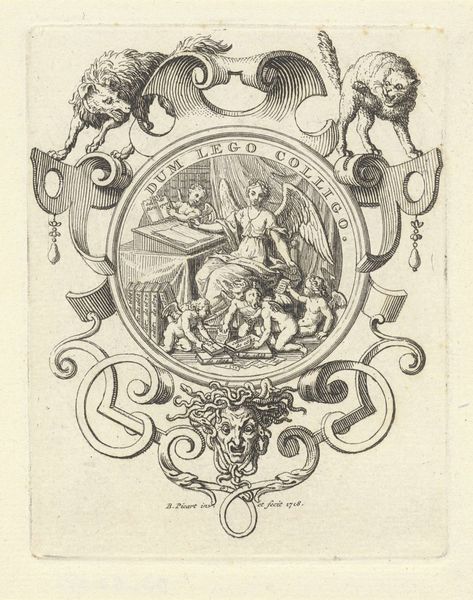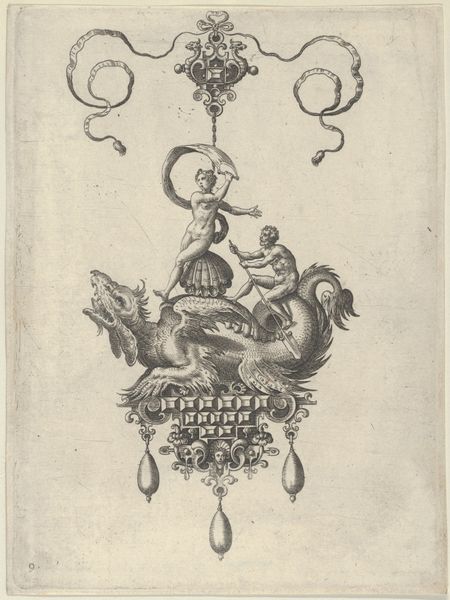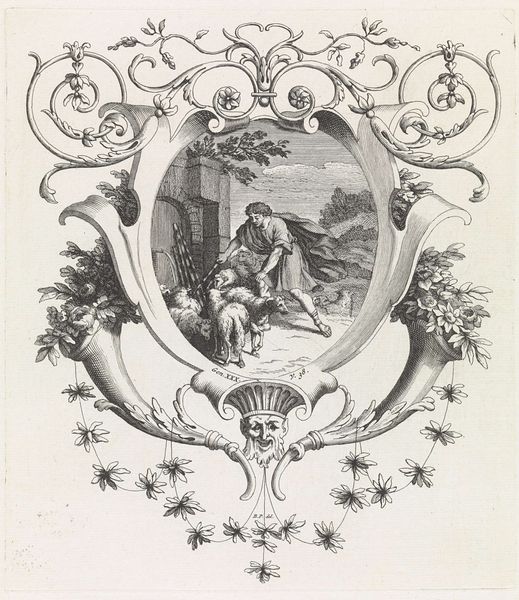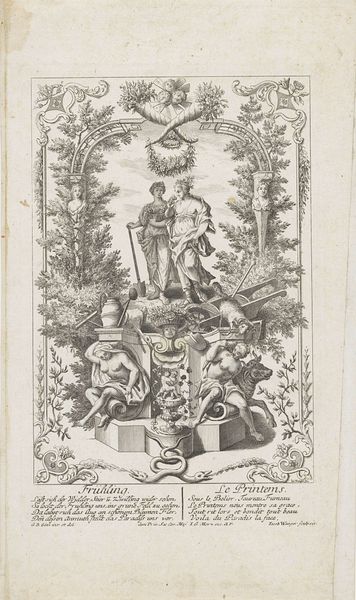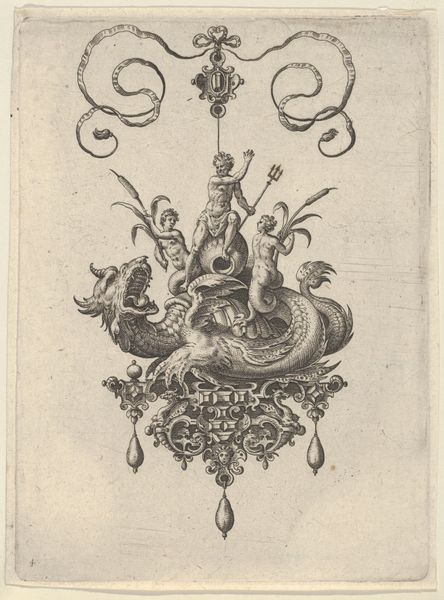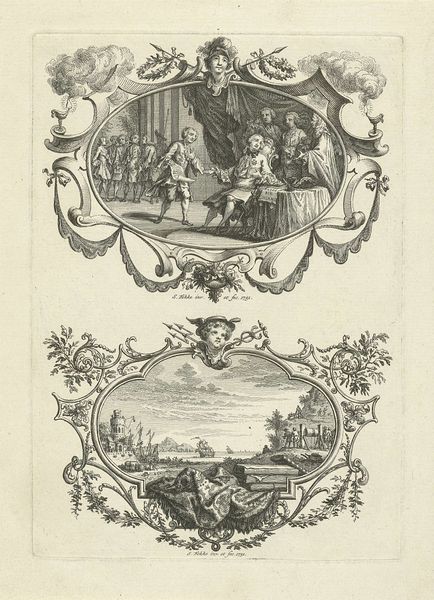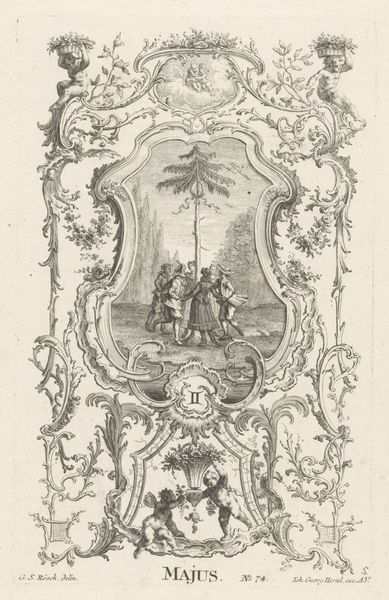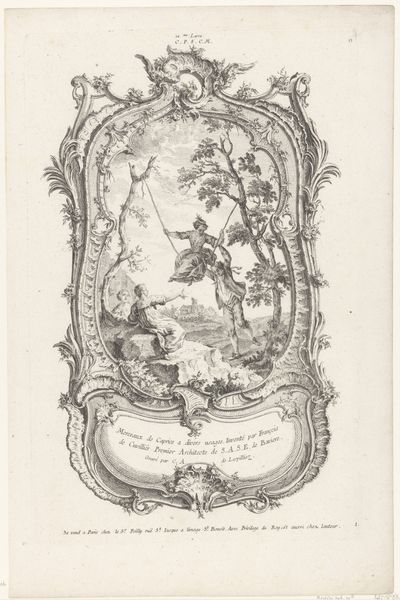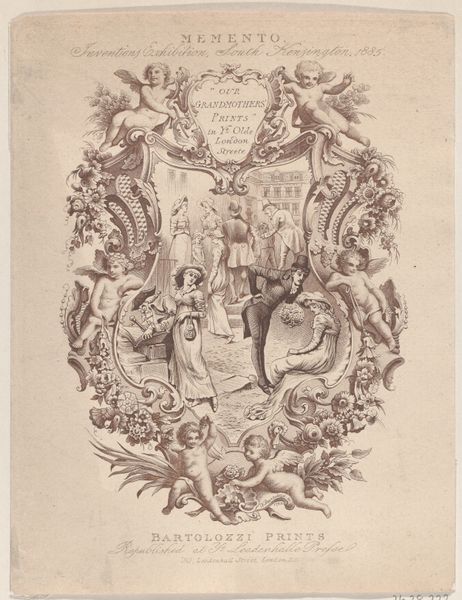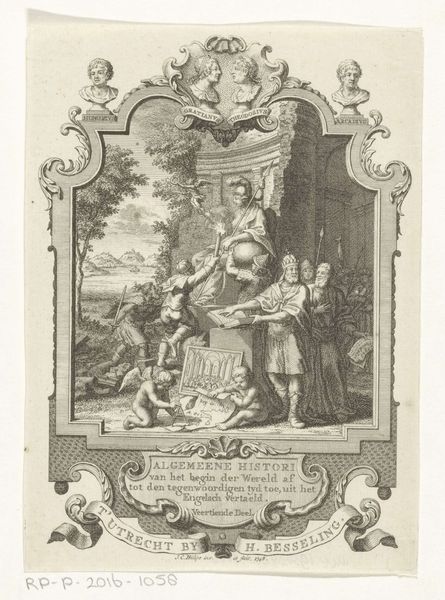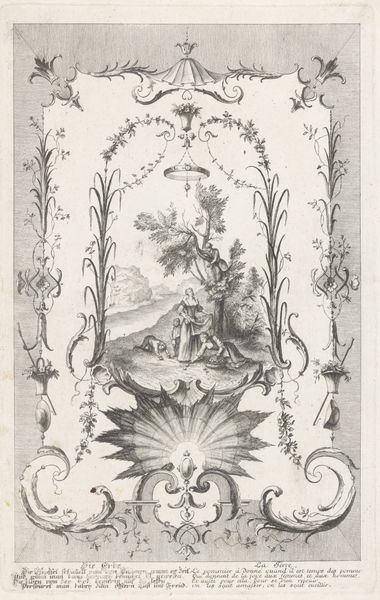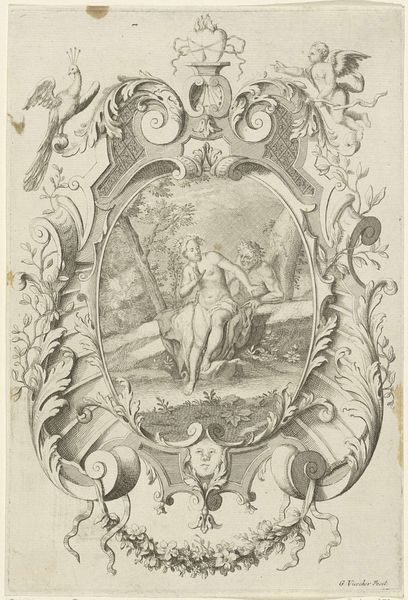
drawing, print, etching, engraving
#
drawing
#
quirky illustration
#
allegory
#
pen drawing
# print
#
pen illustration
#
pen sketch
#
etching
#
old engraving style
#
personal sketchbook
#
pen-ink sketch
#
15_18th-century
#
pen work
#
sketchbook drawing
#
14_17th-century
#
history-painting
#
sketchbook art
#
engraving
Dimensions: height 225 mm, width 140 mm
Copyright: Rijks Museum: Open Domain
Curator: This tightly packed print, etched and engraved sometime between 1787 and 1804, is titled "Titelprent voor: De Bataafsche menschlijkheid, 1801-1804," and it's held in the collection of the Rijksmuseum. What are your immediate thoughts? Editor: Chaotic yet balanced! The circular composition attempts order, but the symbolic density teeters toward overwhelming. It evokes the sensation of looking into a turbulent dream. Curator: I see your point. Note the crisp lines of the engraving and etching, almost fighting against the subject matter itself. It's as if the formal structure is trying to contain the riotous imagery. Editor: Indeed. The eye is drawn immediately to the central figure, the warrior. He stands for something, but it’s hard to put my finger on what without understanding the overall iconography. The creature at the warrior’s feet feels classically symbolic—a multi-headed beast embodying chaos or corruption perhaps? Curator: Precisely. The overall allegorical tableau refers to the ideals surrounding "Batavian humanity" – that is, the ideals of the Batavian Republic – emerging in light versus disappearing in darkness. Consider the inscription "Hinc cruor et caedes" and then "hic oritur tenebris splendor palmaria." This Latin highlights the transition from bloodshed to flourishing splendour through darkness. Editor: So, it's a pictorial argument about societal transformation? That sun with a face near the top becomes a key motif then, as is paired below by the menacing coat of arms and thunderbolts – order battling disorder, light dispelling darkness, it becomes increasingly fascinating when looking at the totality of symbols used. Curator: Correct. Further, notice the paired texts. "Zy Herschijnen" versus "Zy Verdwynen" and also "En zu Sneven" versus "En deeze Herleven." It forms a duality where societal renewal replaces a dying order, making powerful claims about change in society, and the price for these ideals, rendered via detailed line work. Editor: It is striking how that classical iconography is intertwined with what would have been very present-day ideals and hopes. Now, recognizing the contrast, I understand it much better! Curator: Hopefully we've given our listeners the necessary means to decipher this interesting example of art and allegory in this print. Editor: It all comes down to careful seeing! Thank you!
Comments
No comments
Be the first to comment and join the conversation on the ultimate creative platform.
